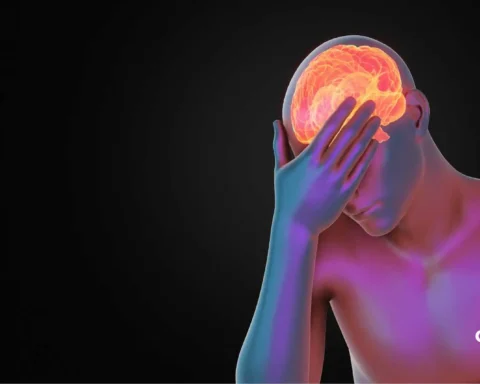Cerebral Palsy (CP) and Parkinson’s Disease (PD) are both neurological conditions that can significantly impact an individual’s movement and overall quality of life. While they share some similarities, they are distinct disorders with different causes, symptoms, and treatments. This blog will delve into the key differences and compare Cerebral Palsy vs Parkinson’s Disease to understand each condition comprehensively.
Table of Contents
What is Cerebral Palsy?
Before we compare Cerebral Palsy vs Parkinson’s, we must understand each disease individually. Cerebral Palsy is a group of neurological disorders that appear in infancy or early childhood and permanently affect body movement and muscle coordination. The condition is caused by damage to the developing brain, often before birth but sometimes during birth or shortly after. This damage can occur due to various factors such as abnormal brain development, infections during pregnancy, lack of oxygen during birth, or head injury in early childhood.
The symptoms of Cerebral Palsy vary widely depending on the specific type and severity of the condition, but common symptoms often include abnormal reflexes, involuntary movements, difficulty controlling eye movement, muscle stiffness or weakness, difficulty with fine motor skills, and problems with balance and coordination. Some individuals with Cerebral Palsy may also experience intellectual disabilities, seizures, vision or hearing impairments, or speech and language difficulties. However, the cause and even symptoms of the disease vary from person to person.
Cerebral Palsy may be of different types, such as progressive supranuclear palsy, spastic cerebral palsy, and ataxic cerebral palsy. These are various sub-types of the condition and have unique characteristics, symptoms and causes.
YOU MIGHT BE INTERESTED IN: How to Live Well with Parkinson’s Disease with Vonita Singh
What is Parkinson’s Disease?
Parkinson’s Disease, on the other hand, is a progressive neurodegenerative disorder of the central nervous system that primarily affects movement. It develops gradually, often starting with a barely noticeable tremor in one hand. As the disease progresses, movement symptoms worsen and may include tremors, slowness of movement (bradykinesia), stiffness or rigidity of limbs, muscle weakness and impaired balance and coordination.
The main cause of Parkinson’s Disease is the gradual loss of nerve cells in the Basal Ganglia of the brain that produce dopamine, a chemical messenger responsible for transmitting signals within the brain to produce smooth, coordinated movement. The exact reason these cells deteriorate is still unknown, but a combination of genetic and environmental factors has been speculated to play a role.
Cerebral Palsy vs Parkinson’s: Key Differences
While both conditions are brain disorders, the two are distinct diseases with differing causes and symptoms. One of the key differences is in the onset and cause of the 2 conditions. Cerebral Palsy often manifests early in life, during infancy or early childhood. It is caused by damage to the brain, which can occur before birth due to factors like abnormal brain development or bacterial infections during pregnancy, during birth due to complications leading to oxygen deprivation, or shortly after birth due to brain damage or injury. Furthermore, the disease can also be caused by low birth weight.
This damage affects motor control and coordination, resulting in symptoms such as abnormal muscle tone, involuntary movements, impaired coordination, and difficulties with balance and fine motor skills. Cerebral Palsy is considered a static condition, meaning that while the brain injury does not worsen over time, the associated symptoms may change as the child grows and develops.
In contrast, Parkinson’s Disease typically develops later in life, usually after the age of 60, and is characterised by a progressive degeneration of dopamine-producing neurons in the brain. This degeneration leads to motor symptoms such as tremors, slow movement (bradykinesia), stiff muscles, and impaired balance and coordination. The exact cause of the condition is not fully understood, but it is believed to involve a combination of genetic predisposition and environmental factors. Unlike Cerebral Palsy, Parkinson’s is a progressive condition, with symptoms worsening over time as more dopamine-producing cells are lost.
The symptoms of Cerebral Palsy primarily involve motor impairments, although individuals may also experience associated challenges such as intellectual disabilities, seizures, speech and language difficulties, and sensory impairments. Cerebral Palsy is classified into various subtypes based on the nature and distribution of motor impairments, including spastic (stiff movement and muscles), dyskinetic (trouble controlling muscles), and ataxic (difficulty with balance and coordination) types.
Treatment for the disorder focuses on managing symptoms and optimising function through physical therapy, medications to control muscle spasms, orthopaedic interventions (such as surgeries to correct skeletal abnormalities like curved spines), and supportive therapies to address associated complications.
On the other hand, Parkinson’s Disease can present with both motor and non-motor symptoms. Non-motor symptoms may include cognitive dysfunction (such as memory problems or confusion), mood disturbances (such as depression or anxiety), sleep disturbances, and autonomic dysfunction (such as constipation or urinary problems). Diagnosis is primarily clinical, based on characteristic motor symptoms, a comprehensive medical history, and a neurological examination. Differential diagnosis is important to rule out other Parkinsonian syndromes or conditions that can mimic the disease.
Furthermore, upon comparing Cerebral Palsy vs Parkinson’s, we can see a difference in the prognosis and treatment of the two disorders as well. Outcomes of Cerebral Palsy vary with each individual. While the disorder itself is not known to cause any reductions to the life expectancy of an individual, other co-morbid conditions might. Meanwhile, Parkinson’s is a degenerative disease, which means that it continues to get worse, leading to increased disability and deterioration of mental health conditions.
Treatment for Parkinson’s focuses on increasing dopamine levels in the brain, surgical interventions for severe cases, and various types of therapy to help cope effectively with the symptoms.
TUNE INTO THIS PODCAST: Fighting the Stigma around Parkinson’s with Sanjeev Dixit
Conclusion
In conclusion, while Cerebral Palsy and Parkinson’s Disease are distinct neurological conditions with unique causes and characteristics, they both pose significant challenges to individuals affected by them. Understanding the differences between these conditions is crucial for accurate diagnosis, appropriate management, and improved quality of life for those living with these conditions and their families.
At first glance, the conditions might appear similar; however, upon comparing Cerebral Palsy vs Parkinson’s, we can see that both are distinct disorders, separated by differing onset age, causes, and symptoms.
FAQs
What is the Difference between Cerebral Palsy vs Parkinson’s?
While both are neurological disorders that are caused by damage to brain cells, they differ in exact cause. Cerebral Palsy is caused early in life due to brain injury, premature birth, or complications before, during, or after birth. Meanwhile, Parkinson’s is a degenerative disorder that only has a substantial chance of occurring at higher ages.
What are the Three Hallmark Signs of Parkinson’s Disease?
The three most common signs of Parkinson’s disease include muscle rigidity, uncontrollable tremors, and bradykinesia (slowness of movement). However, it is important to note that while these 3 are the most common symptoms or signs, individuals may have personalised symptoms and even non-motor symptoms such as cognitive dysfunction or depression and anxiety.
How to Diagnose Parkinson’s Disease?
Since Parkinson’s has no standardised test to diagnose the condition, a diagnosis is based on a clinical background. The patient’s case history is examined, and a neurological examination is conducted to give a clinical diagnosis of Parkinson’s disease.









